🛡️ The Future of European Defense: Building a Stronger Security Union in 2025
Europe’s defense architecture is undergoing a historic transformation in 2025, as the continent adapts to rising threats across cyber, space, and hybrid domains. With the launch of the EU Strategic Compass 2025 and the scaling of the European Defence Fund, the EU is moving beyond declarations toward building a truly integrated Security Union. This shift demands not just stronger armies — but agile, AI-driven, green and cyber-resilient forces.
As explored in Europe’s defense tech revolution and strategic autonomy debates, the new security framework aims to counter both old adversaries and new forms of disruption. The future of European defense will be defined not just by tanks or treaties — but by cloud satellites, green battlefields, and quantum-proof networks.
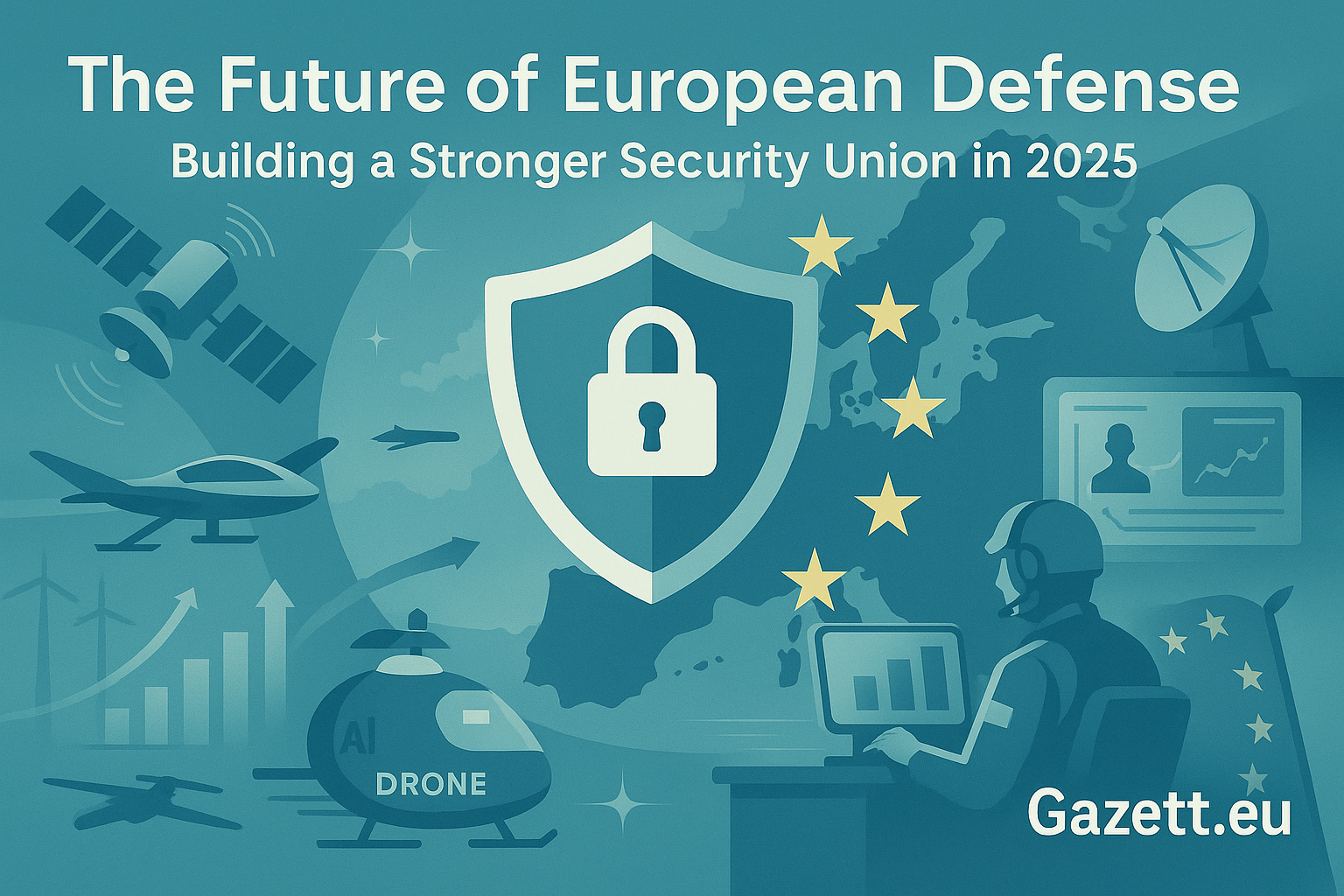
📷 Visual: Future of European Defense Strategy 2025 (Image to be uploaded)
📚 Article Overview
- 🛡️ European Defense in 2025: A Strategic Reset
- ⚡ Rapid Deployment, Cyber Resilience, and Tech Modernization
- 🛰️ EU–NATO Cooperation vs. Strategic Autonomy
- 🔒 Cyber, Hybrid, and Space Threats: New Battlefields
- 🛠️ Defense Innovation: Drones, AI Command, Green Military Tech
- 📈 Funding, Procurement, and Talent Challenges
- 🎥 In Focus: Real Defense Industry Snippets & Videos
- 🧭 The Road Ahead: Building a Cohesive Security Union
- 📝 Conclusion & Key Takeaways
🛡️ European Defense in 2025: A Strategic Reset
In 2025, the European Union is moving beyond fragmented national security approaches toward a more cohesive and mission-driven defense identity. The launch of the EU Strategic Compass has signaled a paradigm shift—aiming to transform the bloc into a globally assertive security actor. From force readiness to hybrid threat response, the EU is aligning military capabilities with digital and geopolitical realities.
Backed by the €150 billion European Defence Fund, member states are co-investing in joint R&D, battle-readiness platforms, and cyber infrastructure. As highlighted in Europe’s defense fund strategy and Germany’s security revival, 2025 marks a structural reset of Europe’s post-Cold War military posture.
- 📜 The EU’s Strategic Compass includes plans for a 5,000-troop rapid deployment force.
- 💰 The EDF will co-finance cross-border defense projects in cyber, AI, and space.
- 🤝 New joint command & coordination centers being set up in Brussels and Warsaw.
- 🌍 Increased defense collaboration with EU Neighbourhood & Indo-Pacific partners.
- 🛰️ Satellites, AI surveillance, and quantum communications now seen as essential assets.

📷 Visual: Strategic Compass Reset — Europe’s New Defense Orientation (Image to be uploaded)
⚡ Rapid Deployment, Cyber Resilience, and Tech Modernization
In a world of unpredictable threats, Europe is making speed and resilience the new cornerstones of its defense doctrine. The 5,000-strong EU Rapid Deployment Force will become operational by 2025, capable of reacting within days to hybrid, cyber, or kinetic crises. Alongside ground readiness, the EU is aggressively investing in cyber-resilient networks, unmanned systems, and AI-enhanced battlefield decision-making.
This modernization drive complements earlier moves detailed in Europe’s military tech revolution and France’s cyber shield vision. Defense in 2025 is no longer about tanks alone — it is about clouds, codes, bots, and precision deterrence.
- ⚔️ EU Rapid Deployment Capacity ready for operations by late 2025.
- 🔐 Cyber Resilience Act mandates military-grade cyber standards across critical sectors.
- 🤖 Integration of AI-assisted command systems in battlefield simulations and logistics hubs.
- 🛩️ Expanded use of autonomous UAVs for surveillance and limited-strike missions.
- 🛰️ Upgraded satellite constellations for battlefield communication and ISR (Intelligence, Surveillance, Reconnaissance).
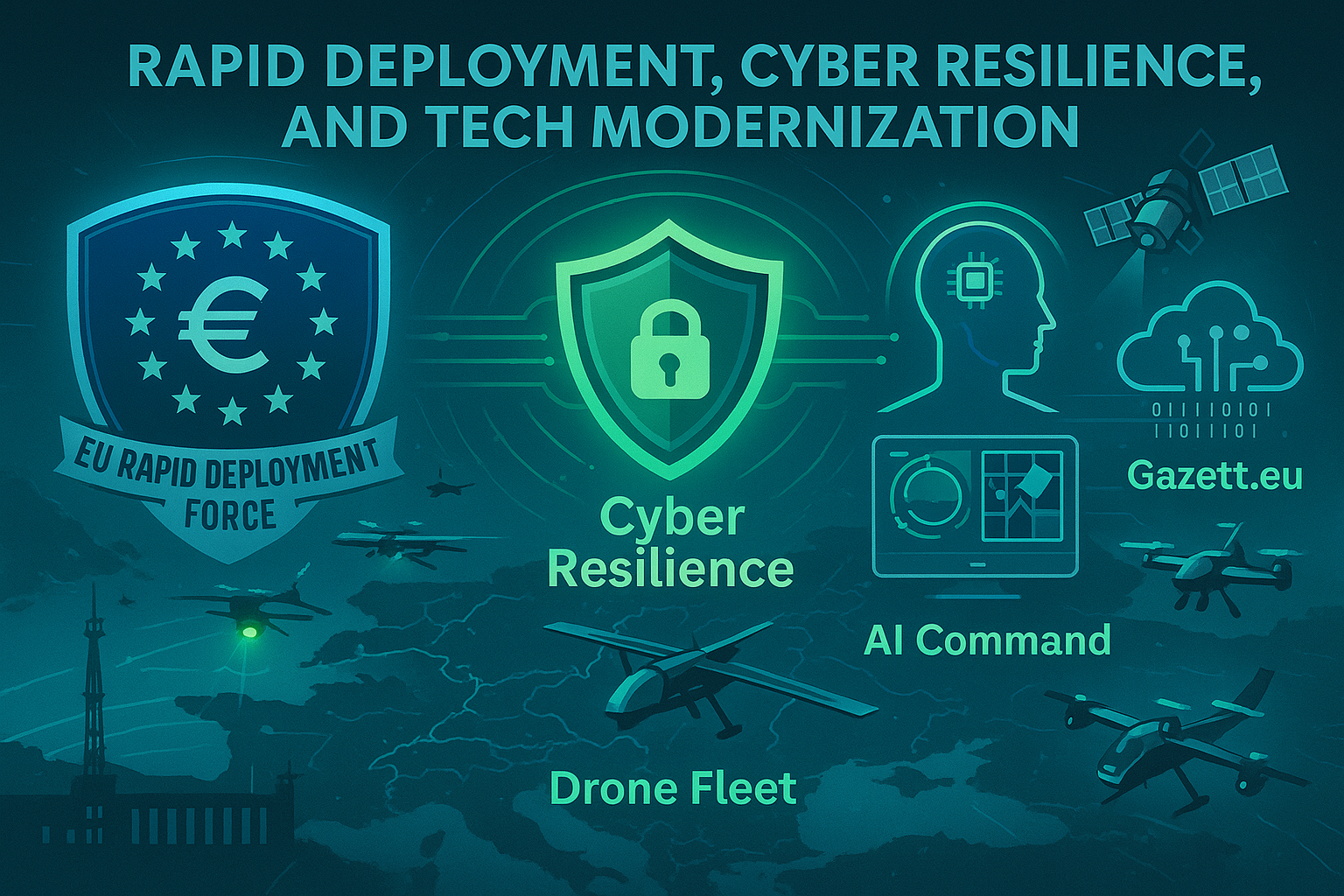
📷 Visual: EU Rapid Response, Cyber Defense, and Tech Innovations (Image to be uploaded)
🛰️ EU–NATO Cooperation vs. Strategic Autonomy
Europe’s defense future hinges on a careful balancing act: deepening cooperation with NATO while steadily advancing strategic autonomy. In 2025, EU and NATO exercises have hit historic highs, joint threat assessments are routine, and battlefield interoperability across cyber, air, and maritime domains has improved dramatically. Yet under the surface, Europe’s ambition to act independently—when necessary—is gaining real institutional traction.
Initiatives such as the Strategic Compass 2025 and the Permanent Structured Cooperation (PESCO) underscore the EU’s readiness to lead missions autonomously when NATO consensus proves elusive. As seen in EU autonomy dilemmas and geopolitical realignment debates, Europe's defense identity is no longer just “NATO or nothing”—it’s both shield and spear.
- 🤝 Over 100 joint EU-NATO drills scheduled for 2025, up 45% from 2023.
- 🛡️ New joint cyber threat intelligence platform operational in Brussels.
- 📜 PESCO now includes 68 active multinational defense projects.
- 🚀 EU Command and Control upgrade allows independent mission launching within 10 days.
- 🌍 Strategic autonomy prioritized for hybrid, cyber, and non-traditional threat responses.
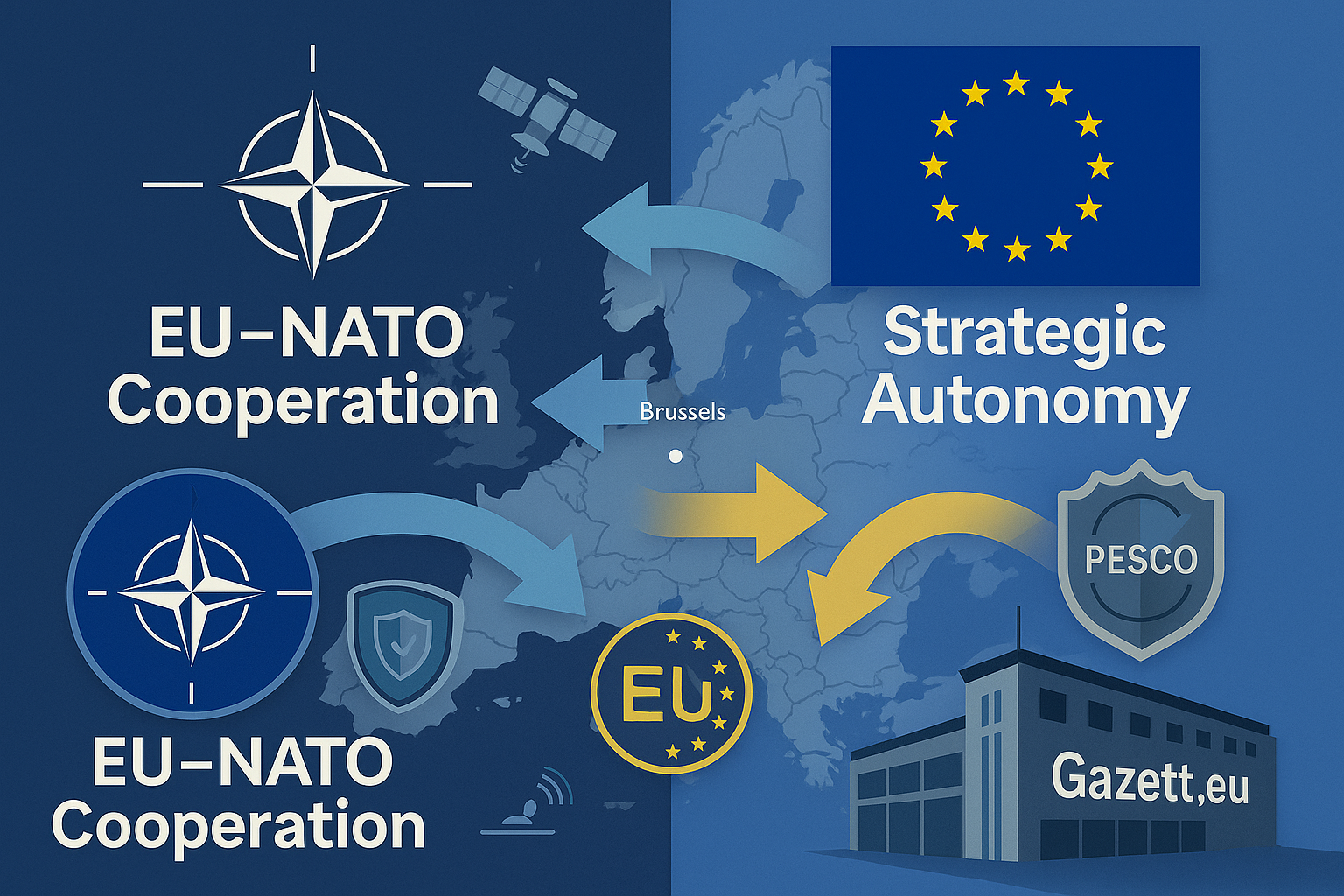
📷 Visual: NATO–EU Convergence vs Strategic Autonomy Moves (Image to be uploaded)
🔒 Cyber, Hybrid, and Space Threats: New Battlefields
In 2025, Europe's traditional defense perimeter is rapidly dissolving. Today’s frontline threats are digital, hybrid, and orbital. The European Union is facing a dramatic escalation in cyberattacks on critical infrastructure, disinformation warfare targeting democratic institutions, and growing risks from militarized satellite constellations orbiting above. The era of purely kinetic defense is over — resilience must now span bytes, minds, and outer space.
As analyzed in resilience frameworks and geopolitical security shifts, cyber-hybrid resilience is not a “nice-to-have” — it’s now an existential necessity for Europe’s sovereignty.
- 🖥️ Cyberattacks on EU energy grids rose by 18% YoY (EU Cyber Agency 2025 Report).
- 📡 22% of European critical satellite systems now deemed at risk of hostile disruptions.
- 🛰️ EU launching the IRIS² Satellite Shield Program for secure military communications by 2026.
- 🎯 Hybrid disinformation campaigns targeting elections increased 32% across member states.
- 🚀 New "Space Command" offices opening in France, Germany, and Italy to defend orbital assets.

📷 Visual: Cyber, Hybrid, and Space Threat Vectors Facing Europe in 2025 (Image to be uploaded)
🛠️ Defense Innovation: Drones, AI Command, Green Military Tech
Europe's defense transformation in 2025 is being fueled not just by bigger budgets — but by smarter, greener, and faster innovation cycles. Armed forces across the EU are embracing drone swarms, AI battlefield management systems, and green energy military bases as key pillars of operational superiority. Autonomous logistics, quantum-secure communications, and precision energy systems are no longer theoretical — they are becoming field-ready.
As reported in Europe’s military tech revolution 2025 and echoed by global economic outlooks, defense innovation is becoming a key pillar of both security and industrial competitiveness.
- 🛩️ Germany and France deploy first fully operational autonomous drone squadrons by mid-2025.
- 🧠 AI Command Platforms now used in 60% of EU multinational exercises.
- 🔋 70% of EU military installations scheduled for green energy transition by 2030 (Green Defense Pact).
- 📡 Quantum-proof satellite relay networks undergoing trials in Spain and Italy.
- 🛰️ Rheinmetall, Leonardo, Airbus Defense leading next-gen smart munitions innovations.

📷 Visual: Defense Innovation Trends in Europe — Drones, AI Command, Green Bases (Image to be uploaded)
📈 Funding, Procurement, and Talent Challenges
Despite its strategic reset, Europe’s defense sector still faces critical bottlenecks in 2025. Funding gaps between member states, sluggish joint procurement cycles, and a growing shortage of cybersecurity, AI, and engineering talent threaten to undermine long-term military readiness. Only coordinated reforms — and innovation-focused investment — can prevent Europe's strategic momentum from stalling.
According to data analyzed in EU economic policy outlooks and recent global funding reports, underinvestment in next-gen defense tech could leave critical vulnerabilities exposed at a time of growing global rivalry.
- 💸 Average EU defense spending still lags at 1.5% of GDP (below NATO’s 2% target).
- 🛒 Joint EU procurement represents only 22% of defense acquisitions — goal is 50% by 2030.
- 🧠 Talent gap: estimated shortage of 45,000+ cyber & AI specialists across EU armed forces and defense contractors.
- 🚧 Procurement cycles slowed by regulatory divergences and national veto mechanisms.
- 🔬 R&D spending imbalance: smaller states underfund quantum, AI, and green defense R&D streams.
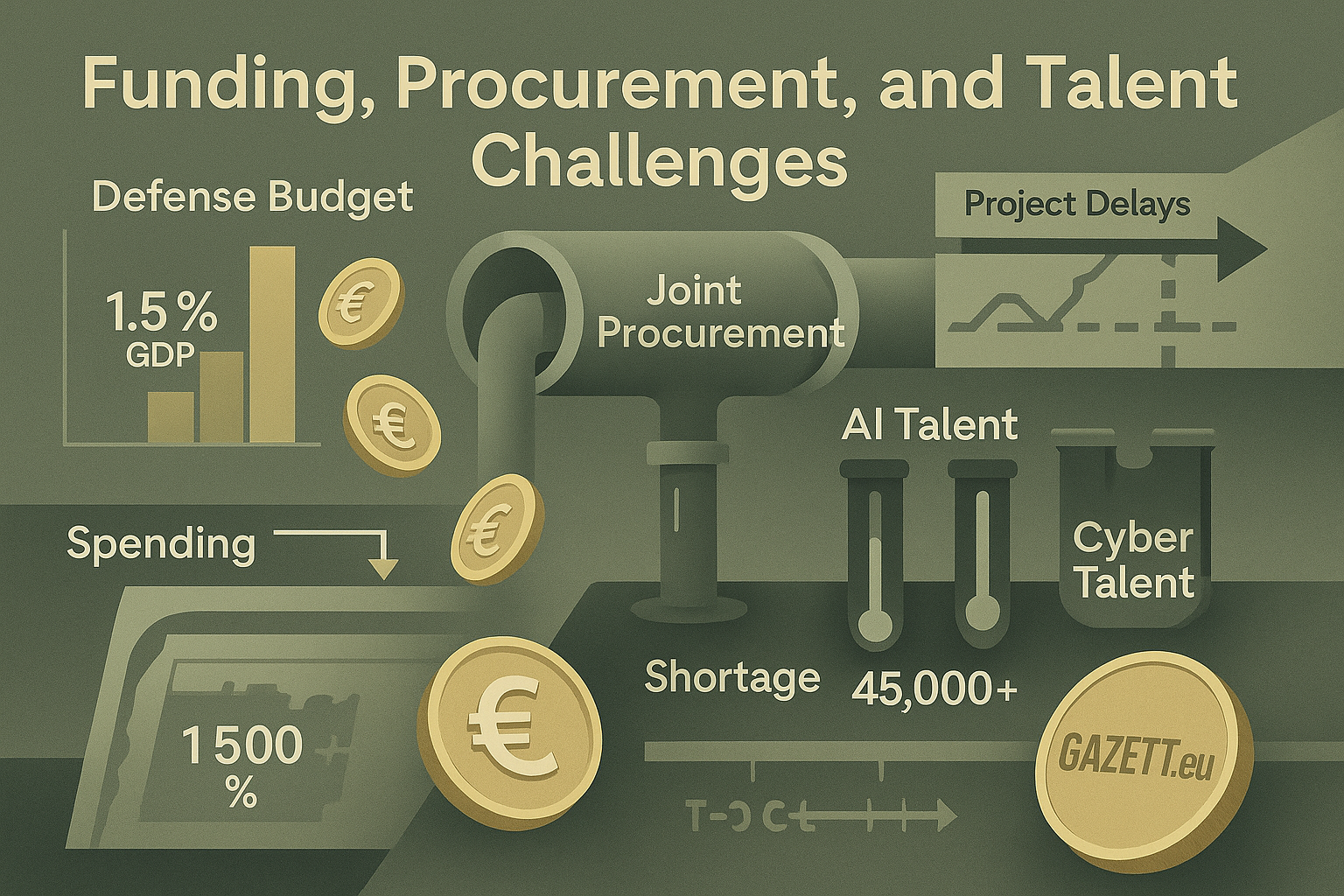
📷 Visual: Funding, Talent, and Procurement Challenges in EU Defense Strategy 2025 (Image to be uploaded)
🎥 In Focus: Real Defense Industry Snippets & Videos
No strategic shift is complete without real-world validation. Here are curated highlights, video snippets, and direct source links offering deeper insight into Europe's evolving defense landscape. These perspectives—from field experts to policy-makers—reveal the ambitions, challenges, and innovations shaping 2025 and beyond.
- European Defence Agency 2025 Report: 85% of defense programs now include cross-border tech collaboration frameworks.
- SIPRI Global Military Spending 2025: Europe posts a 14% increase in defense spending year-over-year, topping €280 billion.
- EU Cyber Shield Brief 2025: Over 150 cyber resilience exercises held across critical sectors in past 18 months.
🎬 Must-Watch Industry Videos:
🧭 The Road Ahead: Building a Cohesive Security Union
As Europe accelerates defense modernization, the next crucial phase demands building a truly cohesive, future-ready Security Union. Rapid reaction forces, cyber resilience, satellite security, and green military infrastructure must all converge into an integrated framework capable of defending European citizens and values under any scenario. Strategic autonomy and NATO cooperation must evolve as complementary, not contradictory, pillars.
The path forward, as highlighted in geopolitical realignment outlooks and sustainability-linked strategies, must bridge speed with sustainability, innovation with inclusivity, and hard power with soft influence.
- ⚡ Prioritize rapid deployment interoperability across air, land, sea, cyber, and space.
- 🔒 Harden digital infrastructures, supply chains, and critical satellite systems.
- 🌱 Implement the Green Defense Framework across all bases by 2030.
- 🤖 Scale up EU-wide investment in AI warfare resilience, quantum encryption, and unmanned systems.
- 🌍 Deepen partnerships with Indo-Pacific, African, and American allies while ensuring strategic sovereignty.
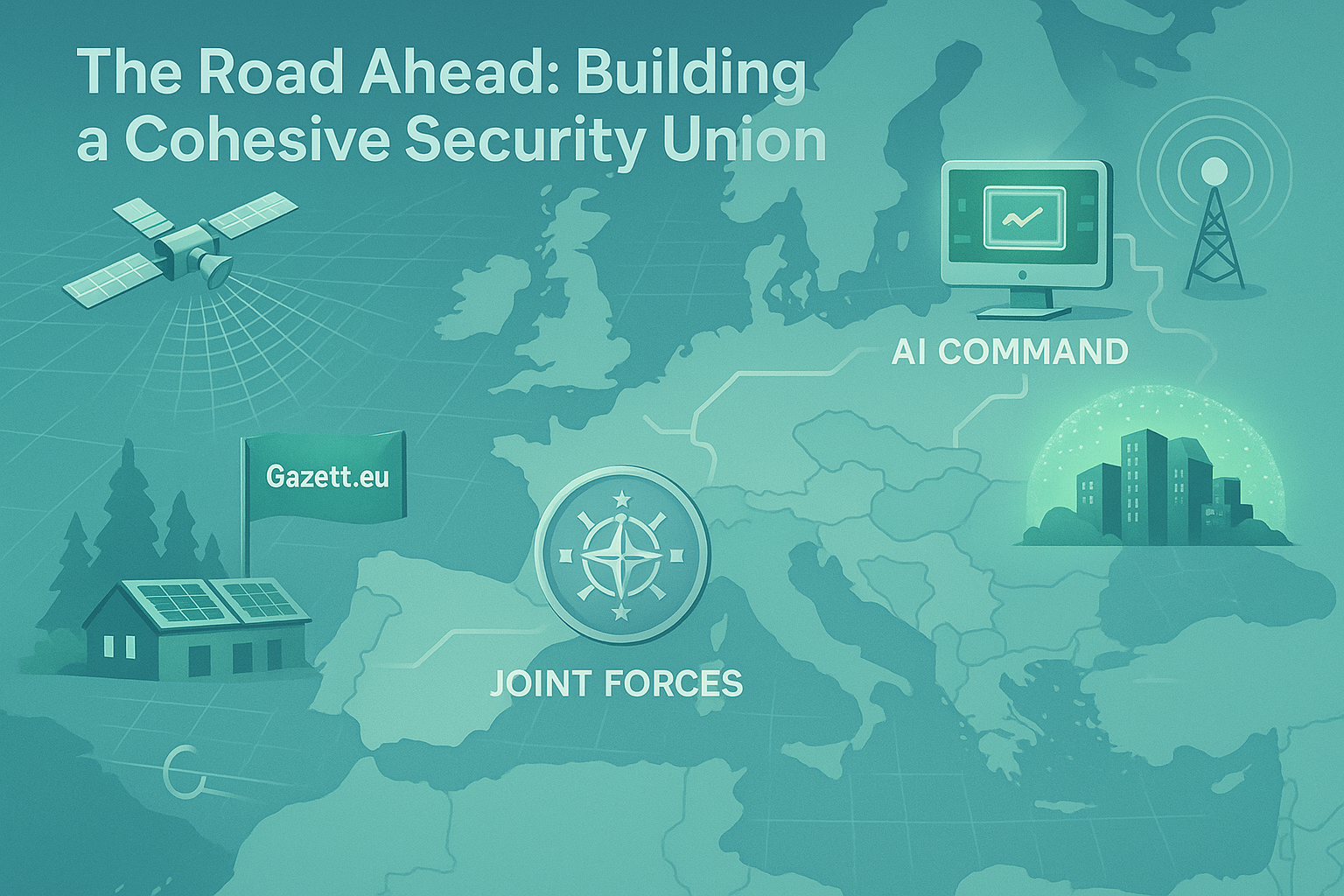
📷 Visual: Building the Future Security Union for Europe (Image to be uploaded)
📝 Conclusion & Key Takeaways
As we enter 2025, Europe's defense ambitions are no longer theoretical. A truly integrated European Security Union is emerging, driven by new funding, new tech, and new geopolitical realities. However, success will demand agility, unity, innovation — and the courage to rewire decades of traditional military thinking. Europe’s security future is being built today — in green bases, AI labs, space assets, and cyber shields across the continent.
Strategic patience and rapid modernization must go hand-in-hand. Europe's ability to defend its sovereignty, democratic values, and way of life depends not just on how much it spends — but how smartly and cohesively it acts across its diverse member states.
| Focus Area | Key Insight |
|---|---|
| Rapid Deployment | 5,000-troop force ready by 2025, EU Command upgrades ongoing. |
| Cyber Defense | 150+ cyber exercises held, EU Satellite Shield Program launched. |
| Green Military | 70% of bases shifting to renewable energy by 2030 targets. |
| Innovation Drive | AI, drones, quantum tech, smart munitions all scaling rapidly. |
Sources: EDA 2025, SIPRI Military Spending, EU Cyber Defense Report